“Cherokee Days” at NMAI should have lasted at least a week!
The annual celebration of Cherokee culture and history is over, but you can still enjoy some of the highlights and plan for next year.
Each year, the National Museum of the American Indian celebrates Cherokee history during the Cherokee Days festival, featuring the three federally recognized Cherokee tribes—Cherokee Nation, United Keetoowah Band of Cherokee Indians and Eastern Band of Cherokee Indians. The three days of festivities over the weekend of April 12 – 14 included the installation of the original Treaty of New Echota (1835), two banner exhibitions “The Cherokee Culture” and “A Story of Cherokee Removal” and a festival full of cultural demonstrations and performances.
The banner exhibition, “A Story of Cherokee Removal,” shares the story of removal on the infamous Trail of Tears from the Cherokee perspective and addresses the devastating costs of greed and oppression. It also shows how the tribe persevered, adapted and learned to thrive. Featured within the exhibition are historical quotations from witnesses of the Cherokee Trail of Tears, historical timelines and a Trail of Tears route map. This exhibition will be on view in the museum’s fourth floor through Oct. 30.
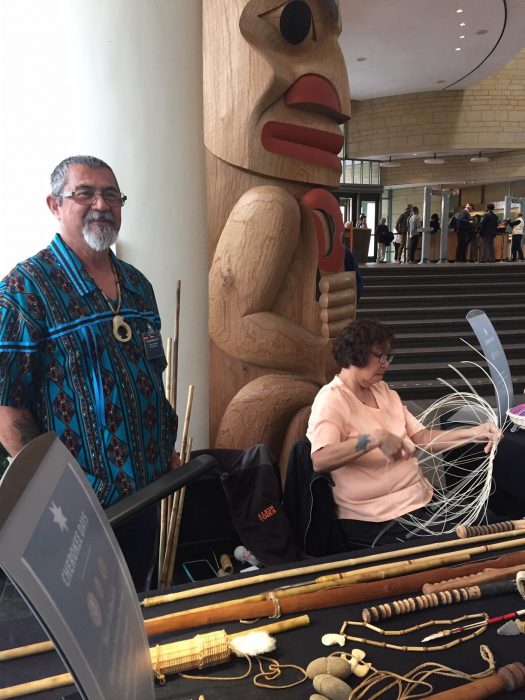
The three-day “Cherokee Days” festival at the National Museum of the American Indian featured, demonstrations, performances and exhibitions of Cherokee culture. (Photo by Marilyn Scallan)
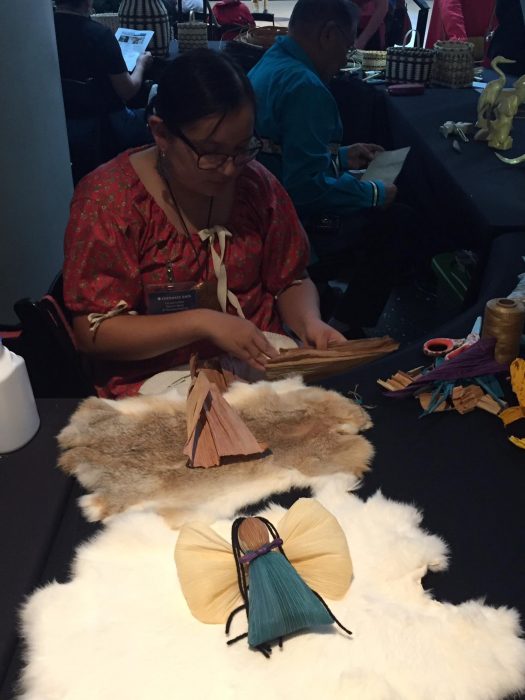
The three-day “Cherokee Days” festival at the National Museum of the American Indian featured, demonstrations, performances and exhibitions of traditional Cherokee culture. (Photo by Marilyn Scallan)
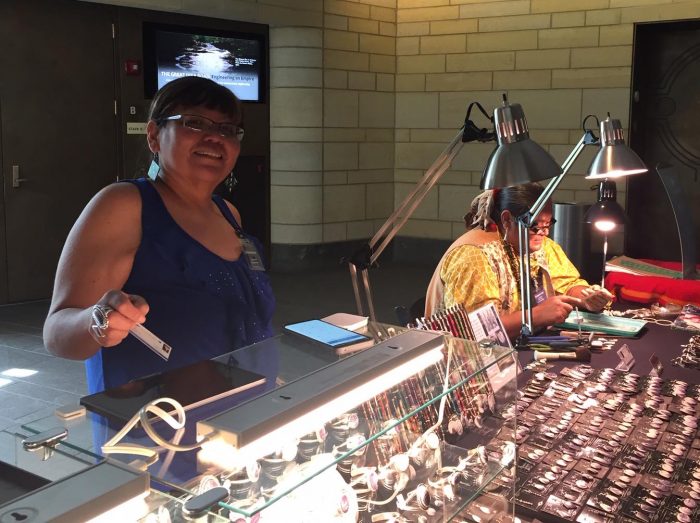
The three-day “Cherokee Days” festival at the National Museum of the American Indian featured, demonstrations, performances and exhibitions of traditional Cherokee culture. (Photo by Marilyn Scallan)
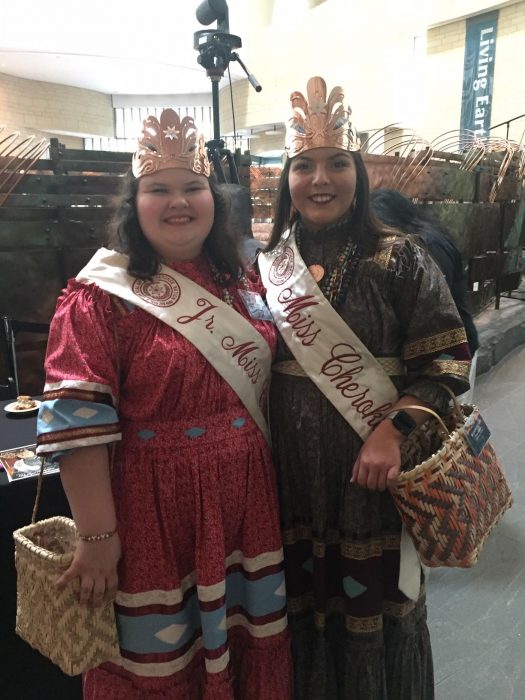
Miss Cherokee and Jr. Miss Cherokee at the three-day “Cherokee Days” festival at the National Museum of the American Indian, which featured, demonstrations, performances and exhibitions of traditional Cherokee culture. (Photo by Marilyn Scallan)
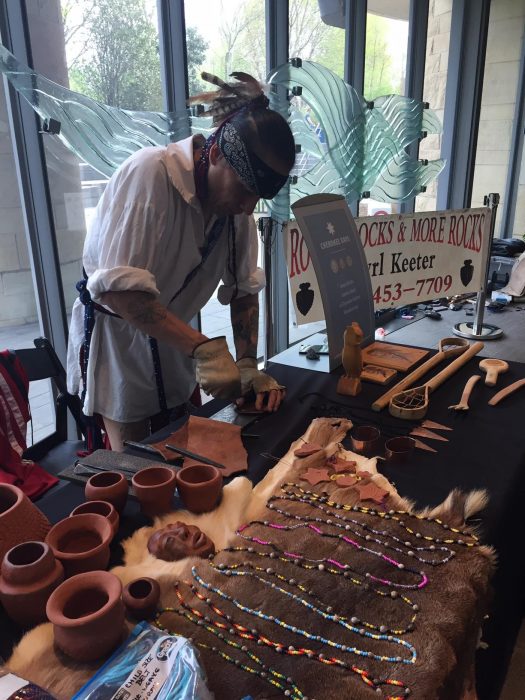
The three-day “Cherokee Days” festival at the National Museum of the American Indian featured, demonstrations, performances and exhibitions of traditional Cherokee culture. (Photo by Marilyn Scallan)
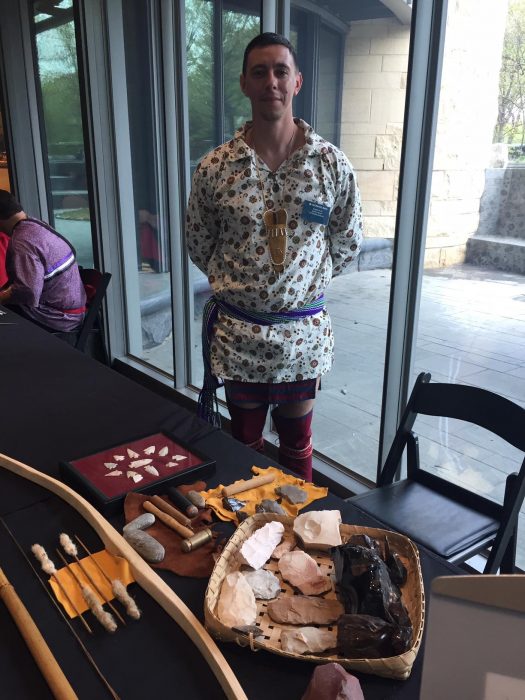
The three-day “Cherokee Days” festival at the National Museum of the American Indian featured, demonstrations, performances and exhibitions of traditional Cherokee culture. (Photo by Marilyn Scallan)
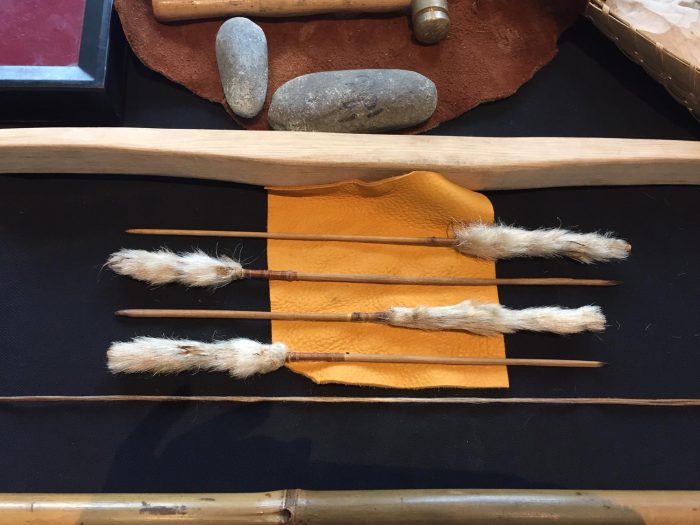
The three-day “Cherokee Days” festival at the National Museum of the American Indian featured, demonstrations, performances and exhibitions of traditional Cherokee culture. (Photo by Marilyn Scallan)
Treaty of New Echota, on Loan From the National Archives
Treaties—solemn agreements between sovereign nations—lie at the heart of the relationship between Indian Nations and the United States. Sometimes coerced, invariably broken, treaties still define mutual obligations between the United States and Indian Nations. The National Museum of the American Indian will display the Treaty of New Echota (1835) from April 12 through fall 2019.
After the Indian Removal Act was passed in 1830, a small group of Cherokee citizens began to believe that they had no choice but to give up their Nation’s land and move west. Although they had no legal right to represent the Cherokee Nation, they signed the Treaty of New Echota with the U.S. government in December 1835, ceding all Cherokee lands in the east in exchange for lands west of the Mississippi River and compensation. On loan from the National Archives, the treaty will be on view in the exhibition “Nation to Nation: Treaties Between the United States and American Indian Nations.”
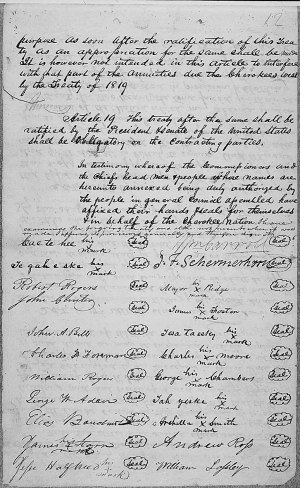
The signature page of the Treaty of New Echota. (Image from the National Archives.)
Displaying original treaties in “Nation to Nation” is made possible by the National Archives, an exhibition partner. Several of the treaties receive extensive conservation treatment by the National Archives prior to loan. There are a total of over 370 ratified Indian treaties in the National Archives. For more information about these treaties, see https://www.archives.gov/research/native-americans/treaties.
Posted: 16 April 2019
-
Categories:
American Indian Museum , Education, Access & Outreach , Feature Stories , History and Culture






